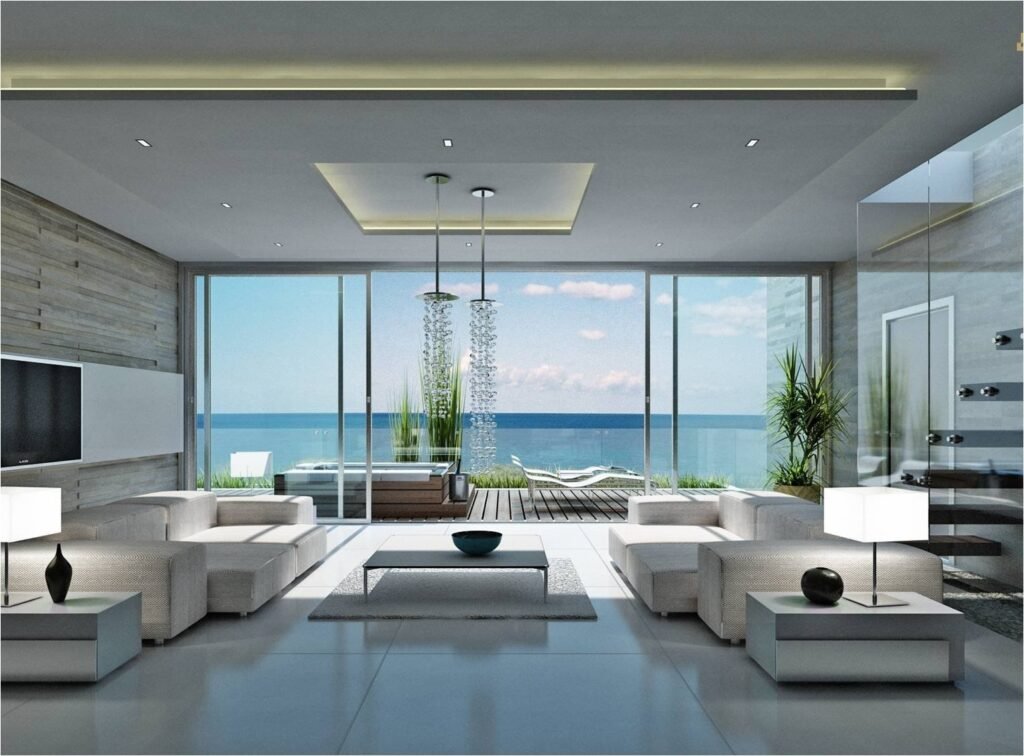In today’s ever-evolving professional landscape, hybrid workspaces have gained significant traction. As more and more companies embrace a flexible work model that combines remote and in-office work, the role of interior designers in creating functional and aesthetically pleasing environments for employees has become paramount.
In this blog post, we will explore the crucial role of the luxury interior designer in Ahmedabad in crafting productive hybrid workspaces and delve into the various aspects they consider to create spaces that optimize productivity, collaboration, and employee well-being.
Understanding Hybrid Workspaces
To fully grasp the significance of interior design in hybrid workspaces, it is vital to understand what these spaces entail. Hybrid workspaces combine elements of both traditional office spaces and remote work.
They offer employees the freedom to choose where and how they work, striking a balance between the structure of an office and the flexibility of remote work. This model brings numerous benefits, including increased flexibility, improved work-life balance, and enhanced employee satisfaction.
However, the success of a hybrid work model heavily depends on the design of the workspace itself. A well-designed environment can support productivity and employee well-being, while a poorly designed one may hinder collaboration and impede workflow. This is where interior designers step in.

The Impact of Interior Design on Hybrid Workspaces
Interior design plays a significant role in shaping the atmosphere and functionality of a workspace. Every design element contributes to employees ‘ overall productivity and well-being, from lighting and layout to the color scheme and furniture selection.
Lighting is a crucial consideration in any workspace, and hybrid workspaces are no exception. Proper lighting can improve focus, reduce eye strain, and enhance mood. Interior designers carefully select lighting fixtures and incorporate natural light sources to create a balanced and refreshing workspace.
The layout of a hybrid workspace is another essential aspect of interior design. It should be designed with flexibility and adaptability in mind. Modular furniture, movable partitions, and multifunctional spaces allow employees to quickly adapt the area to their needs, whether for individual-focused work or collaborative projects.
The color scheme also plays a vital role in creating a productive environment. Specific colors stimulate creativity and focus, while others promote relaxation and calmness. The interior designer in Ahmedabad carefully selects color palettes based on the particular goals of the workspace and the tasks performed within it.
Collaboration Spaces for Hybrid Work Models
Collaboration is a vital component of any thriving hybrid work environment. Interior designers are crucial in optimizing collaboration spaces to foster effective communication and teamwork among remote and in-office team members.
Innovative design concepts such as virtual meeting rooms, video conferencing technology, and interactive whiteboards can bridge the gap between remote and in-office employees, enabling seamless collaboration. Additionally, creating versatile areas that accommodate both virtual and face-to-face meetings is essential. Designers can incorporate movable furniture, soundproofing materials, and advanced audiovisual systems to create spaces that facilitate effective communication regardless of location.
Balancing Privacy and Connection
While collaboration is crucial, employees also need privacy and quiet spaces for focused work and confidential conversations. Design solutions such as soundproof booths, designated quiet zones, and adjustable privacy screens can be incorporated into shared spaces to balance privacy and connection. Additionally, interior designers can integrate technology solutions that enable seamless communication between remote workers and their in-office counterparts, ensuring that no one feels disconnected or left out.
Section 5: Enhancing Employee Well-being through Interior Design
Employee well-being has become a top priority for organizations, and interior designers play a vital role in creating spaces that promote physical and mental well-being. Designers can enhance employee comfort and satisfaction by incorporating elements such as natural light, greenery, ergonomic furniture, and calming colors.
Natural light has been proven to boost mood, energy levels, and overall well-being. Designers strategically position workstations near windows and incorporate skylights to maximize exposure to natural light. They also introduce greenery and biophilic elements to bring nature indoors, which has been shown to reduce stress and increase productivity.
Ergonomic furniture is another essential aspect of employee well-being. Designers carefully select chairs, desks, and accessories that prioritize comfort, proper posture, and support. This helps reduce the risk of musculoskeletal disorders and increases employee productivity.
By incorporating calming colors such as blues and greens, interior designers create a sense of tranquility and relaxation in the workspace. These colors can help reduce stress and anxiety, promoting a more positive and productive work environment.
Conclusion
Interior designers are crucial in crafting productive hybrid workspaces in the ever-evolving professional landscape. Through their expertise, they create environments that optimize productivity, encourage collaboration, and prioritize employee well-being. Investing in well-designed workspaces can attract top talent, maximize productivity, and foster a positive and engaging work culture. If you are considering a hybrid work model for your organization, consult an interior designer in Ahmedabad to ensure your workspace meets your needs and goals. Together, let’s create hybrid workspaces that empower employees and drive success.





